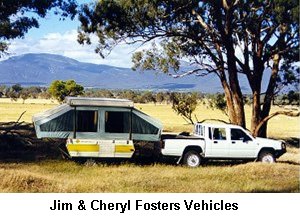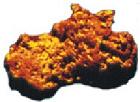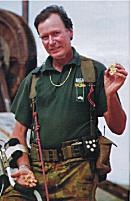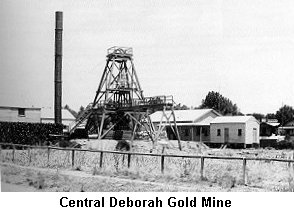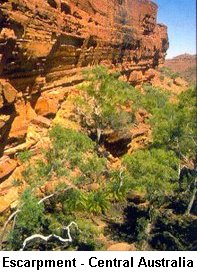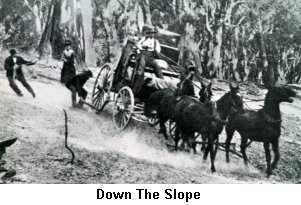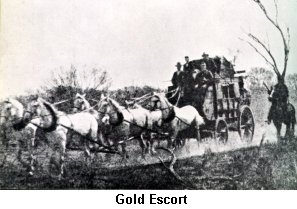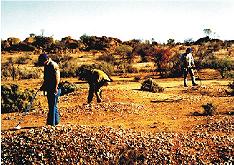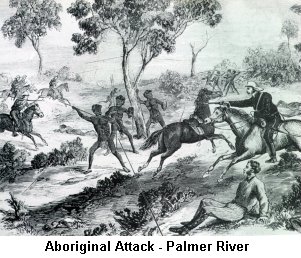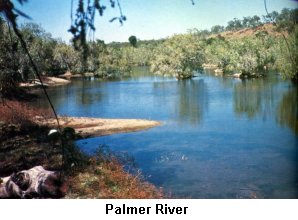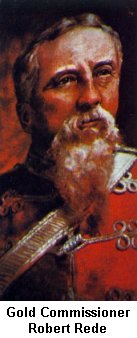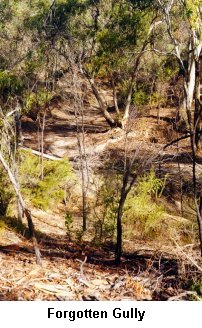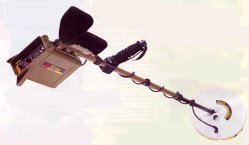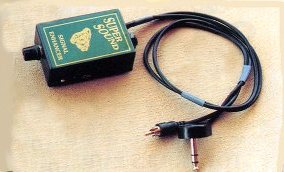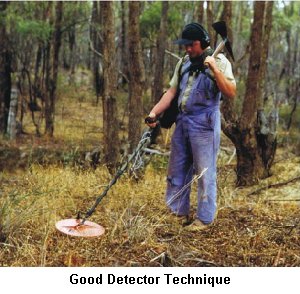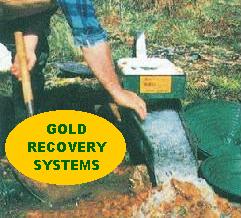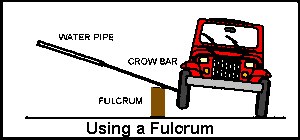
| May 1999 | |||||||||||||||||||||||||||||||||||||||||||||||||
|
|||||||||||||||||||||||||||||||||||||||||||||||||
Contents
|
|||||||||||||||||||||||||||||||||||||||||||||||||
| 1. EDITORIAL Jim and Cheryl Foster began an odyssey a few weeks ago that will take them on a 5 months trip from their home in Mount Gambier, South Australia to the gold fields of Western Australia. For the next several months we will follow their journey, progress, setbacks, trials and tribulations, and hopefully their successes as they travel to the gold fields, and explore and detect in this vast and forbidding region. This adventure will take five months to complete, and as each month goes by Jim and Cheryl will share their adventures with us. Both highly skilled with metal detectors the experience and knowledge they will pass on to you will be invaluable. It will be our pleasure to present their adventures.
Editor Email: [email protected] All material in this magazine is copyright and may not be reproduced in any part or form whatsoever without written permission from the publisher.
|
|||||||||||||||||||||||||||||||||||||||||||||||||
|
2. OLYMPIC DAM MINE by Peter Brady Like many gold mines the history and development of outstanding success stories have their origins in controversy, political interference and blundering. Western Mining's project at Roxby Downs in South Australia was no stranger to these requirements in the early 1970's. Roxby Downs Station is situated "out in the sticks", or in more recognizable language, a long way from anywhere. Essentially a sheep run close to 200 miles north of Port Augusta in South Australia. The area is semi arid with little natural rainfall, and is it recognized that instead of running sheep to the acre, the equation is more like acres to the sheep, as the vegetation is so sparse and limited. Western Mining Corporation was incorporated in 1933 as a gold exploration, mining and management company. Like most mining companies these days a variety of minerals are mined from their holdings, and in the case of the Roxby Downs venture this was truly to be a mine of world significance. The site at Roxby was identified using satellite technology, and initial exploratory drillings revealed enormous reserves of minerals. Further testing confirmed the fabulous wealth of uranium, copper and gold were world class. The difficulties that lay ahead of Western Mining were political. Uranium mining is frowned on by the Labor Party in Australia and is supported by the Liberal National Party coalition. With a State Labor party in power in South Australia at the time, getting this mine operational would be no mean feat. The Labor Party en bloc, opposed the mine while the Liberal Party supported it. With the local newspapers solidly backing the mining operation intense political lobbying was undertaken. With the balance of power finely balanced in the parliament only one defector was needed from the Labor party for the final vote to succeed. Norm Foster a long serving member of the Labor Party voted for the mine to proceed, and the indenture agreement was assured. Not so the political future of Mr. Foster.
The vision of the directors of WMC was far reaching. Rather than make it a "bush camp" environment with men only, Roxby Downs was to be a fully structured town in it's own right. Homes, wives and children were all to be part of this oasis in the desert. The foresight displayed resulted in a fine town rising from the desert sands. Fully structured with all the amenities and more found in most country towns. In twenty years Roxby has developed into a delightful community. The average income in the area is one of the highest in Australia as a result. Among the benefits that the Olympic Dam Mine has brought to South Australia is a rail link, water resources and electricity links, bitumen roads not just to Roxby Downs but to the opal mining community of Andamooka. Coupled with this a permanent work force exceeding 1,200 employees directly employed by the company and a large group of sub-contractors who are regularly employed. Recently WMC announced that it was expanding its operations at the Olympic Mine Site, with an injection of funds totalling $1.5 billion. This will guarantee the mine will continue at an increased rate of production for at least another 100 years. With massive ore reserves the future is assured. Western Mining has a strong policy of promoting active exploration. Considerable reserves of minerals including gold have been located to the south west of Roxby Downs in the Gawler Craton, an exciting new area of apparent immense mineral wealth. Although WMC has a diverse portfolio, gold mining makes a substantial contribution to the overall profitability of the company. Gold produced at Olympic Dam averages about 30,000 oz per annum, and this is to be doubled with the new development. Gold produced by WMC Australia wide exceeds 800,000 oz per year. Visitors to the mine are welcome and regular tours are conducted. The Olympic Dam Mine is a major contributor to the wealth of this nation.
|
|||||||||||||||||||||||||||||||||||||||||||||||||
by Tom Ferguson The enormous quantities of gold that the ground gave up in the Bendigo region in the 1850's, ranks among the worlds great gold bonanza's. In fact so much gold was found in this area that these days the quantity is hard to comprehend. It was indeed a staggering and overwhelming display of wealth beyond imagination. The area was sparsely settled in the 1840's with sheep runs. Leased from the government, the acreage's were enormous and with no fencing, shepherds huts were constructed mainly from local stone and thatch, and men were employed as shepherds throughout the region. A few remnants of these huts still remain today. There is some conjecture as to who actually discovered gold at Bendigo. In reality that historically unrecorded fact will remain a subject for historians to discuss ad in finitum. Perhaps it was Margaret Kenneky, who found gold while washing in Bendigo Creek, but it is more likely to have been the shepherds who tendered the flocks in this area. The creeks in the region were full of gold, and it is incomprehensible to believe that shepherds were not redeeming at least some of the golden feast. In the spring of 1851, gold was being extracted from the sheep run on Bendigo Creek. Mount Alexander was giving up gold of ever-increasing quantities, and a large number of diggers were in the vicinity. As word leaked out that gold had been found in Bendigo Creek, numbers quickly swelled, and the rush had begun. Although initially there were not large numbers evident rushing the site, within six months the area was a teeming mass of diggings. By Christmas of 1851, there were about 600 diggers at Bendigo Creek. They all gathered and collectively celebrated Christmas day. It was a grand celebration. It was later estimated that up to 100,000 oz were recovered from the Bendigo diggings in the two months before Christmas 1851. More and more diggers were arriving from Mount Alexander as the gold there slowed. Bendigo was gaining ground as a prime gold field. That summer was particularly hot and water scarce. That precious commodity was such a requirement to wash the dirt to remove the gold.
This was indeed a wealth that was unbelievable. The wealth recorded by government officers of gold got on some claims is staggering. One gold commissioner named Read recorded that there was so much gold laying on top of the ground he was required to literally decide the issue by marking the ground with a knife to decide which gold fell on which claim. A jeweller in Melbourne faced a rough miner with a heavy sack on his back, which when emptied spilled out over 100 pounds weight of gold nuggets on the floor of his shop. There were a number of small rushes in the area. By mid 1852 the diggers numbered about 25,000 and the entire area was a mass of yellow mud and bogs, as the ground was hacked with what tools could be found, to find the golden metal. The road from Melbourne was a total quagmire during that winter. Carts and drays abandoned where they were bogged or collapsed. Exhausted animals put out of their misery when they could no longer go on. The one hundred miles from Melbourne to the diggings was a dangerous place. In the first half of 1852 no police were available to police the area and bushrangers took full advantage of their luck. Such characters as "Black Douglas", a Negro who had jumped ship and his band were notorious for their exploits, including a number of murders committed during hold-ups. "Young Bendigo" and his gang worked the area as well preying on the unsuspecting. Diggers gathered in groups for protection, and moved en masse, posting sentries overnight to keep the well mounted bushrangers at bay. The Porcupine Inn, the only licensed premises within 20 miles of the diggings at the time was said to have made a profit of about 40,000 pounds in 1852. It was noted as one of the most profitable "claims", although it had been burnt down and rebuilt in 1852. The Porcupine developed a reputation for drunkenness, unruly behaviour, murder and mayhem of all kinds in those early months. All types of unsavoury characters gathered there. With a lack of police presence on the gold fields, the diggers developed their own code of conduct, which was rigidly enforced. If found stealing gold the offender would be slowly roasted over a hot fire, searing the flesh as the prisoner screamed in agony. It was a most effective way of stopping petty thieving. At some of the richer fields like Peg Leg, named for a trio of peg legged diggers, the wealth was astounding. One small claim gave over 3,000 oz. The adjacent claim gave close to 2,000 oz. The latter, giving up over 750 oz. from a single dish of dirt . A further 800 oz. came from one bucketful of washing stuff. Commissioner Read had recorded seeing 430 oz. taken from a mere hatful of dirt. One group of four miners in a rich area claimed to have recovered an average of 4 pounds of gold per man per day, for a two-month period. Staggering claims indeed, but with a great deal of truth attached. At Ironbark Gully, nuggets of 2-8 oz were common place.
Towards the end of 1852, with a vast population of some 50,000 diggers the gold from this massive alluvial area was diminishing. By August diggers were moving onto other rushes at the Ovens and at Creswick Creek. The area produced several large nuggets. The first recovered was "The Dascombe", and this was sold in London for 1,500 pounds. "The Victoria" nugget was bought by the Victorian Government for 1,650 pounds and was presented to Queen Victoria. "The Whipstick" a nugget weighing 573 oz. was found close to the surface. "The John Bull" weighing 384 oz. was sold in London for 5,000 pounds. By the end of 1852, the Bendigo area had recovered a staggering 475,000-oz of gold. This at least was the official figure. The unofficial figure would be at least twice that and certainly well over one million ounces. As the alluvial diggers moved on and other reworked old diggings, they could not imagine that beneath the surface of where they have been working even greater riches were laying in wait. The first chapter of the Bendigo story had been written.
by Sue "Goldie" Reynolds In the annuls of gold history Bendigo ranks as one of the giants of gold production. Although there was more than a substantial share of surface gold, the real wealth of Bendigo lay well beneath the surface. The origins of the Central Deborah Gold Mine lies deep in the economic quagmire so evident throughout the first three decades of this century. Australia's contribution to World War 1 had been enormous for such a young and burgeoning country. As a result the young nation was in economic chaos with crippling debts. By 1930 unemployment was rife with up to 30 per cent of the male population seeking employment. The world depression was taking a terrible toll on this young country. The prospect of another global war was looming in Europe and Australia was suffering from the whole global mess that dominated the western world during that era. Gold production in Australia had dropped by no less than 85% of what it had been at the turn of the century. World markets shunned Australian pounds and eventually the government was forced to devalue by twenty percent against the Sterling unit of Great Britain. The government in its wisdom had commissioned reports into various industries as early as 1928, among them gold, which was a notable non-performer. As a result recommendations were made which both the Federal and State Governments embraced. Financial assistance was provided to re-establish three gold mines in Bendigo. The Central Nell Gwynne, the Deborah and the Monument Hill Mines were selected to receive assistance. The object being to revive gold mining in Bendigo. The Monument Hill Mine was the first to receive assistance, but difficulties with sourcing finance, locating equipment and in fact finding gold soon drained the meagre resources available. In July 1934 movements were made towards redeveloping the Deborah Mine, and a share issue was released to the public. Management by the directors was extremely cautious and progress was painfully slow. At times only two men were actually working on preparing the mine. Assistance came from an unexpected source as the Monument Hill Mine had proved to be unprofitable, and directors and investors decided not to support further cash injections at this location.
At this time the Second World War was again draining the resources of this nation. Although many joined up at the commencement of the war in 1939, with the bombing of Darwin in February 1942, many more men joined up to defend their homeland and labour became scarce indeed. Many gold mines were forced to close, as they were unable to maintain a sufficient workforce. The Central Deborah on the other hand continued quietly sinking the main shaft ever deeper, and testing side shafts as it progressed downwards with some success. Both management and directors were pleased with what they were seeing in the tested ore bodies. The federal coalition government that has strongly supported the gold industry had lost government and had been replaced by a Labor Government led by Prime Minister Curtin. With a change of government came a change of policy regarding the gold industry and the taxes that would be payable. Where previously no taxes at all were payable on gold produced, that situation now changed, with call ups of cash injections from shareholders no longer tax deductible. Many involved believed that the gold industry depleted as it was, was now doomed. At least half the gold mines of Victoria were forced to close as a result of this policy. Fortunately the Central Deborah was not one of them. To remain operating against a drain of manpower and against government policy was too much for some. Again the contribution to the Second World War by Australians was significant. With a population of just seven million over one million donned a uniform. During the war years the Central Deborah managed to continue slowly forward. With very limited manpower the mine had continued its preparatory path and by 1945 the mine had 30 employees working underground. During these years several experimental shafts were cut and the results of the subsequent crushings showed promise. In fact the gold retrieved was overtaking the costs in monetary terms of operating the mine and in 1945 a dividend was paid to shareholders. The end of the war brought further difficulties. The government had placed a bureaucratic nightmare of applications and impediments in deciding which industries would receive quantities of materials for developments, due to shortages. Approvals were required from at least three government departments, each working independently of the other. Needless to say progress was somewhat slow. Eventually all approvals were in place for the Central Deborah to install further plant improvements, including air compressors, a chimney stack, and a pair of winding engines for attachment to the poppet head. To give some idea of the absurdity of the difficulties experienced, corrugated iron could only be used on roofs and not side walls, and at least two government departments were required to check the validity of requests for materials.
Although the Central Deborah Gold Mine took about 5 years to ready it for production the results were rather meagre. In fact at the peak of employment only about 40 men in total were employed. The production of gold from the mine was as follows. Figures are approximate.
It could therefore be said that the great hopes and enthusiasm of those promoting the Central Deborah Mine fell rather short of expectations. For the last two years Tributors - contractors who worked for a share of the gold, worked the mine. Forty percent for the digger, and sixty percent for the company. In November 1954 the mine closed.
After the mine closed several prominent citizens who were keen to preserve the historical significance of the region put forward propositions for the preservations of the Central Deborah Mine without success. Eventually with heavy lobbying the Bendigo Council purchased the mine in 1970 for $6,000.
From that time, community groups moved forward with securing the mine as a major tourist attraction, and today the Central Deborah remains as a major tourist attraction for visitors to Bendigo. |
|||||||||||||||||||||||||||||||||||||||||||||||||
|
|||||||||||||||||||||||||||||||||||||||||||||||||
|
|||||||||||||||||||||||||||||||||||||||||||||||||
|
|||||||||||||||||||||||||||||||||||||||||||||||||
|
5. THE LEGEND OF LASSETER - PART 3 Craig Wilson Colson rushed towards the overturned plane. Petrol from the aircraft was leaking profusely, and the pilot Coote was motionless slumped forward and bleeding profusely. Colson, released him and pulled him away from the damaged craft, fearing fire. His leg was broken. Colson hastily made a crude splint and strapped the damaged leg, and as best he could stopped the bleeding. Strapping Coote to the truck, he left a note near the aircraft explaining what had happened and drove non-stop for the next 22 hours to Alice Springs, where medical help would be at hand. The party at Ilbilba was nonchalant in their activities, and a relaxed atmosphere was evident, although a watchful eye was kept on the blacks. Three days passed, with the realization becoming more evident with each hour that something was amiss. Blakeley decided to return to Taylor's Creek leaving Lasseter and Mickey to guard the stores. It took the large truck 5 days to make that journey. Late in the afternoon the truck came over a rise and there was the wrecked aircraft, still on its back. Clearly the plane had to be recovered and returned to Alice Springs where it could be railed to Adelaide for the necessary repairs. They set about dismantling the plane, and a day or two later, Colson arrived back at the crash site from Alice Springs in the smaller truck. After the customary greetings and a cuppa (cup of tea) they loaded the damaged aircraft onto the smaller truck and after farewells, Colson again set out for Alice Springs. The larger truck dubbed the "Thornycroft" , set off for Ilbilba once again. The three occupants fully aware that a quick expedition was now out of the question, without the assistance of the airborne platform. In their absence, Lasseter took the time to study the indigenous inhabitants. He noted that they were incredibly black, with black hair. They never washed and were all totally naked. He was fascinated by the way they could track. They could 'read' sign on the ground that a white man simply could not see. Young children could easily identify members of the tribe from their footprints, although somewhat obscured in loose sand. A white man could see where the sand had been disturbed, but could "see" nothing more, where an aboriginal could tell who made the track, how long ago it was made, direction of travel, and a host of other information, hidden to white eyes but obvious to black eyes. He was fascinated by this ability to track. Ironically, he found that the blacks could not count beyond 4. After that figure they would describe numbers as "big feller mob", meaning a large number. Cultural differences were stark and obvious. Lasseter was enthralled and began to learn their language, writing down in his diary what different words meant. As time went by, communication between the two groups improved. The Thornycroft reached Ilbilba without incident, and after preparations the regrouped expedition headed west once again. They were soon in sand hills and the going was tough, slow and laborious. Averaging just 10 miles a day after ten days the realization that this adventure was going to be hard on all was obvious. As they broke free from the ever-present sand dunes one morning, they noticed a wisp of smoke in the hills nearby. Another was seen off to the right, and soon small fires in the distant hills surrounded them. No sign of a living being was detected, but they were there. Mickey was strangely quiet. When asked, he declared that if discovered the "Myall" would spear him. Later that afternoon Mount Marjory rose before them. It was an imposing obstacle, rising bout 3,000 feet from the plain, and with iron stone rises almost sheer for 1,000 feet in some places. The abundance of large rocks blocked the trucks further passage, and after spending the night camped there next morning Blakeley and Lasseter set out to climb the monolith before them. It was hard going, and when they eventually reached the top, Lasseter's eyes searched the horizon for familiar landmarks. There were none. Lasseter pored over his navigational aids, and after some time, declared. "We are 150 miles too far north. The watches were wrong". The return down the mountain was slow and silent, both men considering the options available.
Colson's non-arrival was of concern. He should have been at Ilbilba by now. Blakeley decided to retrace his tracks to Taylor's Creek in the hope that Colson would be found there. Lasseter and Mickey remained with the stores, as once more the Thornycroft, headed back through the bush. There was no sign of Colson at Taylor's Creek, and the decision was made to continue towards Alice Springs, lest he was lying injured further east, and in need of help. Many miles further back the second truck was sighted, moving slowly westward towards them. Colson brought great news. The directors of the expedition had arranged for another plane piloted by Pat Hall to join the expedition. Coote, the original pilot, had recovered from his injuries except for a limp, and he would fly with Hall to Ilbilba. The stores on the smaller truck were transferred to the Thornycroft, and Colson's orders were to again return to Alice Springs, and bring the rest of the supplies forward to Ilbilba, and advise a definite date that the aircraft would arrive. Ten days later the sound of a motor approaching roused the camp, and when Colson arrived he brought the news that the plane was due the next morning. Late in the afternoon of the next day, the drone of a plane was heard. As it swooped low over the camp, the natives took off into the bush in all directions. Nothing like this "great bird" had been seen by the natives before. With the exodus of the natives the aircraft landed safely, and the pilot was enthusiastically greeted by the white contingent. The blacks were intently interested in the tracks left by the plane when it landed, and examined them first before eventually gathering around and inspecting the aircraft. In the morning Hall and Lasseter lifted into the air to inspect the country to the southwest. Flying over the vastness of this featureless area, was an awesome experience. The ever shifting sands making identification of landmarks difficult if not impossible. Lasseter eventually indicated he had sighted some landmarks he recognized. The return flight to Ilbilba was most pleasant. On the ground the two pilots conferred for some time and then approached Blakeley. Both airmen considered the range of the aircraft inadequate for the task ahead. The range was limited to 380 miles, which was clearly inadequate in such a vast country. In the interests of safety it was decided to take the plane to Adelaide, replace the motor with a Gypsy Mark 11, and fit a long-range fuel tank. The plane lifted easily into the sky, turned east and disappeared quickly in the direction of Alice Springs. Colson in the auxiliary truck moved out en route to Alice Springs for more stores, and after a few days preparation the grand old Thornycroft, with the remaining members of the expedition, headed southwest towards the country Lasseter had identified. At last, matters were proceeding as planned. No one could have imagined what lay ahead.
|
|||||||||||||||||||||||||||||||||||||||||||||||||
|
|||||||||||||||||||||||||||||||||||||||||||||||||
|
6. THE BLACKSMITH BANDIT Larry Lahey The history of banditry in Australia is indeed a labyrinth of spectacular proportions. The exploits of Dick Turpin and Jesse James and other similar characters pale into insignificance when the deeds of some of Australia's bushrangers are compared in detail. Australia was essentially settled as a penal colony, and only the most serious offenders were transported. Perhaps the best known at least in Australian folklore, is the notorious Ned Kelly, and to a lessor extent, Frank Gardiner, but there were many whose history is recorded for posterity, and what a colourful history it is. After serving their sentences they were released into the community at large, and not returned from whence they had come. Great Britain had purged itself of some of its criminal element but had bestowed upon the free citizens of the fledgling colony of Australia an over abundance of cutthroats, thieves and murderers. Rehabilitation was not a word used in the penal colony of Australia. Come to think of it, I don't think that word is used much even now. Although some went on to serve this country well upon release, far too many used the opportunity to further their criminal careers. Most concentrated their efforts in and around the gold fields which were so abundant in the mid 1800's. The pickings were easy, police were thin on the ground and to a degree mostly incompetent. Come to think of it, nothing much has changed in 150 years. One such character to achieve notoriety was William Day, a convict sent to Van Diemen's Land, (now Tasmania). He was not a young man when he was transported. Upon his release he worked his way to New South Wales and joined the gold rush to the Turon goldfields. He was an affable character who became domiciled at Sofala just north of Bathurst New South Wales where he established a blacksmithing business, and fossicked for gold. He was known to be fairly comfortable financially as he had apparently procured quite an amount of gold in his travels. What more could he want in life? What more indeed! Old habits die hard, and before long he fell in with a suspicious character named Wilson who used the alias Doyle. Wilson was strongly suspected of being involved in the murder of a police trooper near Bathurst some time before. The locals were none too happy with Bill Day forming a warm relationship with such a shady character. It was with some suspicion that the locals at Sofala watched, as the two men set out together towards the mountains in the direction of Sydney one chilly June morning in 1859. On the trip from Sofala to the mountains Day and Wilson had fallen out. In fact they had argued so vehemently about who and what they would hold up that Wilson refused to take any part in the actual robbery. Honour among thieves? Perhaps that adage did not apply to these two. Wilson resolved that he would "do the job" himself without the assistance of Wilson, while Wilson cowered sulking in the bush. The mail coach was on its regular journey from Bathurst to Sydney. It was carrying about 5,000 pounds in gold, notes and cheques . With only one driver, and on this fine crisp morning two passengers, one of who was the Attorney General of the colony of New South Wales. As was the requirement in that part of the mountainous region the passengers had alighted and were walking ahead of the coach, as it negotiated a particularly steep descent, the driver leading the horses at a walk.
Instructed to continue his journey immediately, the driver obeyed and reaching his two passengers, who had witnessed the whole proceedings from further down the hill, took them aboard with haste as Day was still pointing his weapon in their direction. Interestingly, it was noted that there were two men working in a paddock not far from the holdup, and just a short distance from the robbery the coach came across a large group of Chinese, heading towards Bathurst, jogging along the side of the road. When the coach reached Hartley some miles distant the alarm was given and as luck would have it, a large police party happened to be there at the time. Pursuit was swift, and the troopers were soon at the scene of the crime in company with the driver. Day had retreated into the thick bush where Wilson joined him, and the heavy sacks were divided, as they made their way on foot away from the scene of the holdup. Deep in the bush they opened the mail and sorted through the valuables, burning what was of no use to them. Well they burnt most of it, but not before Wilson had hidden in his pocket a prominent letter that would be obvious to all that it had come from the Bathurst mail robbery. Was Wilson scheming behind Day's back. At a pre-arranged site they buried the booty and some firearms, and continued on foot towards a public house Day had used before, intending to stay overnight. Of course no one would suspect two unsavoury characters emerging from the bush on foot from the direction of the robbery, would they? On arriving at the establishment the landlord and his customers were talking about the robbery, as news had reached them by horseback earlier in the day. Day had used this facility before and was on friendly terms with the owner, but was rather put out when he discovered that the property had changed hands and new owner was in fact a retired police sergeant. Each viewed the other suspiciously, and McGregor, the new owner disguised his suspicions until the two felons had retired.
When they were searched the letter was discovered on Wilson, and Day could not understand why his partner in crime has done such a stupid thing as keep a letter from the robbery. The situation between them reached flash point as Day realized that Wilson was "setting him up" to turns Queens evidence. Captain Battye the local police Superintendent exploited their displeasure with each other to the fullest, and separating them, took Wilson with mounted troopers and three black trackers into the thick bush to recover the stolen mail. Within a day almost all the stolen property had been recovered. It was arranged that Wilson was to give evidence against Day as the chief prosecution witness, and for his part believed that he would not be proceeded against, and released. Well at least that is what he was led to believe, or so he thought. To keep him in custody in the short term he was from time to time remanded, until in his opinion he had been remanded once too often. Upon being permitted to exercise one evening he scaled the lock-up fence and disappeared. Despite an extensive search that included black trackers, he was never heard of again. Day was convicted and sentenced to seven years gaol. His release came early as he was a model prisoner, except for the man he killed with a spear while some prisoners were jesting. Oh well, one less to feed thought the authorities. When set free he returned to Sofala and resumed blacksmithing and digging. The free citizens of Sofala did not welcome his return, and his existence was one of solitude and self-imposed exile. He died peacefully at Bathurst Hospital in 1898, a broken and lonely man.
|
|||||||||||||||||||||||||||||||||||||||||||||||||
|
|||||||||||||||||||||||||||||||||||||||||||||||||
|
|||||||||||||||||||||||||||||||||||||||||||||||||
|
7. THE RIVER OF GOLD by Jim Foster What makes thirty five thousand men risk their lives in a mad country roamed by implacable cannibal natives. Only large amounts of gold could lure men to a country with an annual rainfall of 160 inches but where you could still die of thirst, drown in a raging river, or die of any of a dozen disgusting tropical disease. On the 3rd of September 1873 James Venture Mulligan announced he'd found payable gold on the Palmer River in far north Queensland, Australia. He brought back from that desolate wilderness 102 ounces of heavy yellow gold. Gold from a source never before known by white men. Many became enormously wealthy from the Palmer river rush but many more paid the ultimate price. Life was cheap on the Palmer track, and just as cheap in Cooktown, the roaring gold camp that sprang up on the banks of the Endeavour River on the far north coast of Queensland. Many eager diggers never made it out of Cooktown. Some poured their stake money down their throats in a bid to quell the raging thirst the steamy tropics brought on. Some gambled their money away and returned south poorer and wiser but still alive. Those that made it out onto the one hundred and sixty awful miles of the Palmer track had a terrible time of it, but such was the wave of humanity that many made it through to dig for gold. And dig gold they did.
Those who made it through Cooktown on their journey to the fabled Palmer River diggings then faced perils that would make most of us turn around and head for home at a very rapid rate. But those men, ridden by the gold fever, strode on into the interior to face whatever the country could throw in their way. The greatest peril was from the local natives, the Merkin tribe. These people were fierce fighters. Not for them to throw a few spears and run away. Upon first encountering white men they attacked in waves, holding men back in reserve and probing the flanks of the defending white men's camp. They poisoned their spears by rubbing the tips in rotting carcasses and only had to scratch their opponents to kill them. They were defeated in their first battle at what was to be known as Battle Camp, but only because the defenders were so well armed. The heavy bullets from the vicious Snider rifles and repeating pistols cut them down in droves while the loud reports bewildered and frightened them.
Many diggers did exceptionally well. In some places the bed of the Palmer was crossed by slaty reefs that trapped and held the gold. Those first on the scene could pick gold out of the slates without any washing needed, it was like picking up wheat except that this was heavy, shotty, gold with larger nuggets strewn here and there to sweeten the take. Murdo Cameron, a veteran of many rushes happened on a spot where the pebbly river bed fairly gleamed with gold. On his first morning on the site, a bend in the river that formed a point, he was challenged by a claim jumper pointing a revolver at him. Noticing the gun was loaded but not cocked, Cameron let out a roar and knocked the gun from the man's hand into the river. As he did so three more of the gang jumped from cover, but equal to the task Cameron pulled out his own pistol and began blasting away at them. The gang scattered and left Cameron in control of the place he named Pistol Point. In two weeks Cameron took out nine hundred pounds worth of gold from the river bed, a considerable sum in those days. Half a mile downstream two German brothers found and named German Bar, another rock and slate bar that caught and held the gold. It is not known how much gold the brothers got from this spot, but it was enough. They took their gold, made their way back to Cooktown and shipped out. They were never seen on another gold field. Not far away Billy Macleod, another seasoned digger got 193 ounces of gold in a week, then moved on because it was becoming too crowded. The Palmer Rush lasted for almost six years. In that time more than one million ounces of gold was taken from the field, ninety percent of it alluvial. It is estimated that the Chinese smuggled that much again out of the country unrecorded. It was a time that will never come again. A time that opened up a new part of the country for a brief period, the Palmer now lies almost undisturbed. Except for the Merkins it is as inhospitable now as it was when James Venture Mulligan strode across it all those years ago. Getting to the Palmer today is a lot easier than it was in the eighteen hundreds, but still no picnic. Depending on which part of the field you want to go you have to have permission. You must have a four wheel drive vehicle. Good maps and a GPS are essential, as is a radio. Locals, or those living within fifty kilometres or so have no problem, they know the country and can live there quite easily. But for visitors it is best they join one of the organized expeditions that travel out to detect for gold and relics. The country is rugged and extremely hard on vehicles of any kind. It is also unforgiving if your vehicle breaks down or becomes bogged you will need a flying doctor radio and plenty of supplies to keep you going until help arrives. The Wet season, from December to March, effectively closes off all access to the Top End as the area is called. Only during the Dry season, April to November can there be a reasonable chance of getting into the Palmer. The best months are from May through to September. Check ads on this site for tours of the top end of Australia and specifically to the lower Cape York Peninsula north west of Cairns. Cairns is the closest city to the Palmer where you may outfit an expedition.
|
|||||||||||||||||||||||||||||||||||||||||||||||||
|
|||||||||||||||||||||||||||||||||||||||||||||||||
8. FLECKS ! - Glints from here and there
|
|||||||||||||||||||||||||||||||||||||||||||||||||
|
|||||||||||||||||||||||||||||||||||||||||||||||||
|
9. THE AUSTRALASIAN MINE DISASTER by Catherine Knight Gold mines in the latter part of the 19th century were dangerous places. About 100 miners a year were being killed in mining accidents, and the Victorian Government moved to enact Mining Regulations in 1872. Mines were constructed with practicality in mind. A deep shaft was sunk that could bring ore to the surface quickly, and shafts were then constructed parallel with the ground, that enabled miners to traverse them with relative ease. The construction of these shafts was on a slightly rising plain, away from the main vertical shaft to allow for the ore to be transported easily. Timber was used to shore up the tunnels, and ore was then mined from the roof. Drainage was important, and there was the ever-present danger of flaking from above, which often resulted in rock falls if the shoring up had not been constructed correctly. The presence of water, often above the miners was a constant danger. Extreme caution was a necessity. The Australasian Gold Mine at Creswick in the gold fields of Victoria began operation in 1867. Although it produced a healthy 40,000-oz of gold, the mine did not pay any dividends and the mine and plant was seized by the Bank of Australasia for unpaid debts. In 1876, some 9 years later, a new company was floated and using more modern methods of recovery the mine was re-opened. This new mine had a new vertical shaft that was quite deep, and new shafts were continued deep into the longitudinal. The mine was profitable and was working around the clock. By 1882 from the bottom of the main shaft, a reef drive had been cut over 2,000 feet north. At 430 feet there was a rise, or escape route to the intermediate level longitudinal shaft, and at 890 feet another vertical escape shaft. In December 1882, a south westerly drive was also being constructed by contractors in the direction of the old workings. At 4.45am on Tuesday 12 December 1882, two contractors struck water overhead in the southwest drive. The volume of water was overwhelming and it necessitated immediate evacuation. Both contractors ran for their lives towards the main shaft warning the platman as they passed, escaping up the main shaft. The platman, Michael Carmody, recognizing the danger to the miners who were unaware of the impending disaster, ran about quarter of a mile down the north shaft to warn his mates. 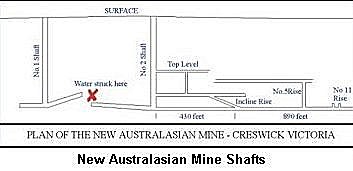 He reached the first two men, Chegwin and Manly, and warned them of the approaching flood, before escaping up No. 5 rise as the water began to rise. Facing great danger themselves, both Chegwin and Manly went further north along the shaft and warned all their mates of the danger. There were 29 men trapped underground at this time. With the alarm raised by the two contractors, help in the form of men were pouring down the shafts, exploring for the lost miners. The water rose extremely quickly and the 29 were trapped by the rising water. Despite attempts to reach the No.5 escape route only two men were able to reach it, one almost drowning within site of rescuers. He was grabbed by the hair and hauled to safety. The remaining men were forced to retreat to number eleven rise where they climbed up the side walls and watched the water rise with them. Their hope was that there would be sufficient air to stop the water rising, but the water kept rising and although there was some air, it soon became stale and men lost consciousness and slipped into the water drowning. On the surface, the warning sirens had roused the sleeping town and massive pumps were brought to bear pumping up to 50,000 gallons a minute, in their desperate attempts to save the trapped miners. Several volunteers made their way down the shafts in a number of attempts to reach the trapped men. Their efforts were in vain. Two days later, and after 50 hours of pumping the rescuers were able to reach the trapped men. Only 5 were still alive, and 22 bodies were recovered. Seventeen of these men had been married and between them they left 75 dependent children. Their dependents received a benefit of 70 pound each. A public subscription also contributed to their welfare. Of note is the fact that the directors of the mine refused aid to the bereaved families, until they had consulted their shareholders. This prompted an immediate response from the Government, who enacted a Regulation deeming that mine owners were prima facie responsible for all accidents, until cleared of negligence by recognized authorities. At the inquest the jurors delivered the following verdict. "We find that the deceased men were drowned in consequence of a burst of water into the New Australasian Company's mine. We are of the opinion that the burst water was occasioned by an error of judgement on the part of Williams Nicholas, the mining manager, in approaching too near the old workings, which contained a large body of water, which error of judgement might have been committed by an ordinary mining manager, and which error we believe resulted from a mistake in the survey". The jury also recommended better signalling and more escape routes for all mines in Victoria. The legislation was enacted in 1883. Despite this positive legislation, the yearly number of mining deaths continued to average about 40. With about 45,000 miners throughout Victoria, this was certainly an improvement on previous statistics.
Although the first Australasian Mine had produced considerable gold in an unprofitable manner, the New Australasian Gold Mine was a financial success. In the latter years of production the mine was let to tribute and at the end of 1887, about 70 miners were working the mine, but none were averaging a weekly wage. In 1888 the mine was closed and the company was dissolved.
Although the mine started with only 11,250 pounds called up capital it returned a positive 98,250 pounds. There were only 15 shareholders in the New Australasian Mine.
Today, all that remains is a small mullock heap. |
|||||||||||||||||||||||||||||||||||||||||||||||||
|
|||||||||||||||||||||||||||||||||||||||||||||||||
|
WE BUY GOLD GOOD QUALITY NUGGETS REQUIRED TOP PRICES PAID Currently seeking half ounce nuggets and upwards. Gold nuggets sold on consignment 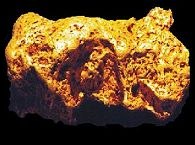
PO Box 258, TANUNDA. SA. 5352 Telephone: (08) 8563 0097 Mobile: 0417 848 910 E-mail: [email protected] |
|||||||||||||||||||||||||||||||||||||||||||||||||
|
|||||||||||||||||||||||||||||||||||||||||||||||||
|
10. BATTLE AT BALLARAT - Part 4 by Craig Wilson Further oppressions occurred on the goldfields by the administration. Of note was the ill treatment of a Catholic priest's servant. A gentle man of Armenian extraction who had been a servant to the Catholic church for some years. He was well known throughout the goldfields, and was in fact a cripple. While carrying out the instructions of his priest he had been accosted by a trooper and requested to produce his miner's license. The trooper would have known that he was not a miner but he was unceremoniously arrested and harshly treated both by the trooper and by Assistant Commissioner Johnstone, who fined him 5 pound for allegedly assaulting the trooper. The Catholic members of the clergy were outraged and protested strongly to Commissioner Rede at this outrageous bahaviour. On the same day, 25th October 1854, another meeting was taking place at Bakery Hill attended by about 15,000 diggers. The mood on the goldfields was still simmering and at this meeting the treatment of the crippled Armenian was condemned, and an inquiry was called for into the behaviour of the administration. Commissioner Rede retaliated quickly. That day he moved the two men who had been charged with setting fire to the Eureka Hotel to Geelong. The next day he had another man arrested and charged him with arson. Governor Hotham had suggested that Rede take this action and it was the governors intention to have the men tried in Melbourne where a favourable verdict was more likely for the administration. The intention was to restore the rule of law on the goldfields.
The evidence given in this inquiry was substantial with over 50 witnesses providing details of the brutality and corruption of the Ballarat administration. The smell of corruption was thick, and even the Governor conceded that the behaviour was improper. He moved to distance his administration by having a corrupt Sergeant Major arrested and dismissed and removed the Police Magistrate John D'Ewes, much to the Magistrates amazement. What had united the miners into forming the "League of Diggers" with common aims was beginning to lose its impact as ethnic differences surfaced again. The aims of each group were somewhat disjointed but in general were aimed at reforms that they believed were much needed. Lalor recognized this above all others, and proposed that a meeting me held to formalize a single and united policy for all groups to work toward. It was to be called the "Ballarat Reform League". Lalor was well respected on the goldfields, and it was clear that he was being pushed forward towards leadership of the League. The Ballarat Times newspaper supported the action, and hinted at Australia becoming an independent nation. On the afternoon of 11th November 1854, the meeting was duly held, and was well attended by a large but peaceful gathering of diggers. Several motions were put and carried, all aimed at relieving the oppression on the goldfields. The "Ballarat Reform League" became a reality, with a properly constituted committee and secretary. In late November the Court cases in Melbourne relating to the Eureka were drawing to a close. Catherine Bentley was acquitted of the murder of Scobie. James Bentley, John Farrell and the barman Hance were all found guilty of manslaughter and sentenced to 3 years hard labour. The three diggers charged with arson were found guilty, with a strong recommendation for mercy from the jury, resulting in the longest sentence being 6 months imprisonment. The Ballarat Reform League met to discuss the sentences, and it was resolved to 'demand' of the Governor that the three men be released. The deputation duly arrived at Government House on Monday the 27th November and met with Hotham. The Governor agreed to hold an inquiry into all their grievances, and he also agreed that they should be represented in the Victorian Parliament. The matter of the three prisoners was a different matter. The mood at Ballarat had developed into a simmering cauldron. The diggers had reached the end of their patience. Governor Hotham had promised re-enforcement's to Commissioner Rede, and on the evening of Tuesday the 28th November, under the command of Captain Christopher Wise, they approached Ballarat. Rumours had abounded throughout the goldfields that soldiers were being sent with cannon to restore order at Ballarat, and upon hearing the troops approach, a large number of diggers attacked the convoy with sticks and stones. The attack was a complete surprise both for the soldiers and from the digger's perspective, as nothing of the sort had been planned. It was simply a spontaneous reaction. Shots rang out as the melee continued and the situation was only relieved by the intervention of mounted police. The troops made for the Government Camp. They had lost a waggon and had some of their weapons and ammunition looted. Sporadic gunfire continued throughout the night, from all over the diggings. The Ballarat Reform Committee was to hold a meeting the next afternoon at 2pm. A huge crowd gathered. The mood was decidedly different from the last meeting. Shotguns, rifles and pistols were abundant and Lalor recognized this situation needed to be diffused. He stood and proposed that a further meeting be held the next Sunday with an elected member from each 40 members present. The motion was carried. It was a this meeting that the Eureka flat was raised on a large flag pole to signify the defiance of the diggers to the oppression. A further suggestion was made that the hated Mining Licenses should be burnt. Some discussion was made on this point but eventually many licenses were burnt in defiance of the repressive system. The situation at Ballarat was deteriorating and Lalor knew this. The skirmish with the soldiers would bring certain retaliation from Rede. It came quickly and with vengeance. Commissioner Rede ordered an inspection of the Mining Licenses and backed up the order with troops of foot soldiers , and mounted police standing by. The gravel pit area from where the attack on the re-enforcement's had begun was targeted. The diggers revolted on the spot and fought with rocks and bottles and anything they could muster to defend themselves as the troops tried to arrest them. Gunfire was heard and the troops and police were being overwhelmed until Commissioner Rede arrived with a platoon of foot troops with bayonets fixed. The authorities with their increased numbers arrested 8 diggers and withdrew to the Government Camp. The seething cauldron was about to boil over.
|
|||||||||||||||||||||||||||||||||||||||||||||||||
|
|||||||||||||||||||||||||||||||||||||||||||||||||
|
|||||||||||||||||||||||||||||||||||||||||||||||||
|
|||||||||||||||||||||||||||||||||||||||||||||||||
|
11. STRIKES Recent Finds
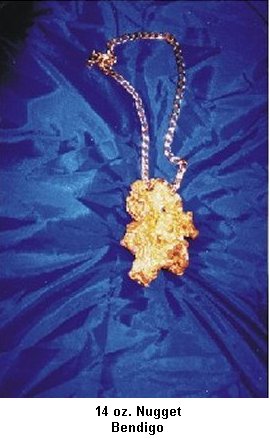
|
|||||||||||||||||||||||||||||||||||||||||||||||||
|
|||||||||||||||||||||||||||||||||||||||||||||||||
|
|||||||||||||||||||||||||||||||||||||||||||||||||
|
|||||||||||||||||||||||||||||||||||||||||||||||||
|
12. FORGOTTEN GULLY by Bill "Nugget" Jones Sometimes there are gullies that just get forgotten. Trying to think of a spot for our next trip, Brenda remembered one that we had never actually worked. We had worked to good effect the private ground out on one side of the gully, but never the gully itself. The gully began away back up in the scrub and wound its way down right alongside a fairly busy road. As the gully and diggings were easily visible from the road I was doubtful if there would be any gold left there. But Brenda said she reckoned it was worth a go. Another way of saying she felt good about it. Having a good feel about a particular site is very important. If you like the look of a spot you will usually get gold there. If you just tag along with someone else and you don't like the look of the ground you usually wont find as much. I have found Brenda's good feelings on a spot to be 100% right. Even though it might be only right for her. But the same applies to my own good vibes. Brenda has often voiced her dissatisfaction with my choice of detecting spots. We arrived after dark and set up camp just off the road. Saturday morning was great I hadn't been going long and I got a nice little lump just below the camp. Brenda gave me a hard took, congratulated me, and then disappeared behind some prickly acacia bushes. Searching the old diggings I was surprised to find a couple of more nice little nuggets. It seemed indeed that this gully had been forgotten. Not even any SD holes were in evidence. This meant that only conventional detectors had been over this gully in the past. Good news for us, and confirmation of Brenda's good feeling about the gully. But wait a minute! So far only I had gold. Brenda hadn't got a thing last time I spoke to her.
Brenda came into camp red in the face and puffing. When asked how she'd gone she proffered her film container with a straight face. I gave it a shake. The contents thumped inside. Not a clink. Not a rattle, but a sort of heavy thunk. I looked at her and she grinned. Tipping the contents out on my palm I found a couple of clean little nuggets and a beautiful 8-gram specimen. My finds, like my swollen head suddenly shrank into insignificance. Brenda's back was covered in acacia bush prickles. While I gingerly brushed her off she told me she had found her gold in under the acacia bushes. Now I find acacia bushes nasty flamin' things, best avoided at all times. Acacia bushes are covered in zillions of tiny prickles. Underneath an acacia bush hangs dry, dead branches. Try moving in under an acacia and these dead things leap off the bush and attach themselves all over you. They get in your cap and hair, all over your back, down between your back and your detector carry bag, and in the woollen armrest cover. If you accidentally blunder into one of these things you can back off, strip off and shake everything free of prickles, then only to find when you dress there are still dozens in your shirt etc, burrowing in under your skin. Sounds like something out of a Steven King novel, only worse. These things exist. Kneeling on them results in a kneeful of tiny extremely painful prickles while picking up a handful of dirt to check for a target results in the same. They are definitely the bush from hell. If that was where Brenda was getting her gold she could have it. No way was I going to be ambushed by a zillion prickles, it just wasn't worth it. Brenda continued to pull gold out of there at such a rate I decided we should move higher up the gully. Brenda didn't like the look of it and found no gold. I liked it and found three more nuggets. Brenda rightly got her way and we moved back down to the lower end of the gully. But even though the gold was thinner on the ground up the top of the gully, there were still no detector holes. Poking around on the lower workings the number of targets thinned out so I began working new ground above the diggings. There were plenty of targets, but no gold. Back down in the gully Brenda was working away under the acacias. Briefly I thought of getting out my plastic rain jacket and joining her, but the thought of days and days of digging out prickles put me off. After all, I'm just a mere male and our pain threshold is lower than that of women. Putting silly thoughts out of my head I worked the ground hard. I dredged up every little trick I could think of and applied it to those diggings and the lower slopes. My reward was 4 nuggets. One was exceptionally pretty while the others were pretty good too. I was happy with what I had, then Brenda emerged from the acacias. Red in the face and looking like an echidna with a crewcut Brenda was in pain. But despite the pain of thousands of sharp prickles digging into her back and shoulders, she was smiling. Turning her back to me to be brushed down she handed over her shoulder her film container. The dam thing didn't rattle when shaken. It didn't thunk. It didn't make any noise, it was too full to rattle. Ripping the lid off I found two gold in quartz specimens. The first was exceptionally pretty. Gold oozed from it. Seams of gold could be seen threaded all through it. It was beautiful. Easily the prettiest specimen I had seen for years. The other was a lump of gleaming white quartz with a good sized nugget of gold showing at one end. A mighty result, from a mighty effort. While I had thought I'd done well Brenda had once again rolled me. As I very carefully brushed off the bulk of the prickles Brenda maintained a cheesy grin. The thought of her gold was going to sustain her ever the next week or so of digging prickles from her hands and knees. Brenda had a hunch about that gully and it had paid off. We both found good gold and had enjoyed the beautiful weather of the goldfields. We didn't go chasing off through the scrub for miles, just pulled off the road a hundred yards or so and found gold. With a bit of experience anybody can do it. It boils down to "if it looks good chances are it is good", and there are plenty of forgotten gullies out there yet. There must be at least one with your name on it.
|
|||||||||||||||||||||||||||||||||||||||||||||||||
|
|||||||||||||||||||||||||||||||||||||||||||||||||
|
|||||||||||||||||||||||||||||||||||||||||||||||||
|
|||||||||||||||||||||||||||||||||||||||||||||||||
|
13. HOW TO USE A DETECTOR by Jim Foster A gold detector works a little like radar. The detector transmits a radio signal into the ground. When this signal encounters metal an eddy current is created on the surface of the metal object. The eddy current is detected by another signal and transmitted to the detectors central processor for interpretation. Once the detector decides the object is metal it will signal this by an increase of threshold audio as the search coil passes over the object. As detectors work on surface area the larger the metal object is the deeper it can be detected and the louder the signal response. The ground in gold bearing areas is usually highly mineralized. This means the signal projected into the ground is a bit like your driving lights on a foggy night. The detector's ability to see an object is severely limited by ground mineralization. When using your detector you should keep your search coil as close to the ground as possible. Move the coil slowly over the ground keeping it parallel to the ground surface. Avoid lifting the coil at the end of each sweep. Learn to roll your wrist as you extend the search coil sweep past your body. Keeping it slow means you have greater control over the coil and are less likely to miss any deep, soft signals from either a small nugget or a very deep nugget. Take only small steps and try to overlap your sweep. Before going out in the field teach yourself to recognize the sound of faint signals. Place metal objects of various size on a bit of ground you have determined free of buried metal. Sweep the search coil over each of these objects in turn and listen to the different sounds they make. Then, while sweeping back and forth, slowly raise your search coil. The fainter sounds you hear as you raise the coil are the types of sounds you are most likely to encounter in the field.
Ground mineralization varies greatly, sometimes in the distance of only one step. If you have a manual ground adjust detector there will be times when you will have to constantly re-tune your machine. An auto ground-tracking detector, such as the SD2200, helps eliminate this annoying problem. Every signal your detector gives is a potential gold nugget. Dig every time, even if you are sceptical. I have dug nuggets that gave double signals just like a length of wire. Usually the nugget was laying on an angle, or as has happened a couple of times, it was long and thin just like a nail. Many gold detectors are fitted with discriminators to enable you to tell the difference between ferrous (iron) and non-ferrous. Gold, silver, brass, lead, etc. Never use a discriminator on the goldfields. High ground mineralization makes all discriminators unreliable. I have seen good sized gold nuggets discriminated out and missed by the original searcher only to be dug by another. During the 1980's gold rush many people bought gold detectors thinking they were going to make a fortune first time out. Often they gave up after the first couple of outings. If at first you don't succeed, stick at it. There's more to finding gold than just looking for it. Using a gold detector is fun. it is something the whole family can enjoy. It gives your trip focus. And what could be more fun than exploring those parts of Australia that gave our country the greatest monetary kick-start in history. The old-timers left more gold behind than they found. With the latest in gold detector technology in your hand you will find your share too. Stick with it, you won't be sorry.
|
|||||||||||||||||||||||||||||||||||||||||||||||||
|
|||||||||||||||||||||||||||||||||||||||||||||||||
|
|||||||||||||||||||||||||||||||||||||||||||||||||
|
|||||||||||||||||||||||||||||||||||||||||||||||||
|
14. GOING BUSH by Fred Willoughby Many of us involved in the gold detecting industry spend some time in remote locations often a long way from civilization. Perhaps at times we don't take enough precautions when travelling, as those of you who have lived in Australia know, "the bush" can at times be unforgiving. Consequently in taking a few sensible steps that most of us do unconsciously, the risk to life and limb out in the "donga" (Ed. Bush) will be minimized. YOUR VEHICLE Always take a reliable vehicle. If your means of transport is 2-wheel drive you will be limited in the locations that you can reach. On the other hand if using a 4-wheel drive vehicle the country that can be traversed will be extensive. In any case if you are in a remote location and you are not sure if your vehicle will successfully negotiate a sand hill or creek., use common sense, make a wise decision and withdraw. Seek another track that may be more easily traversed, but if that is not possible, it is always wise to keep your vehicle in a mobile state. Remember it is your only reliable method of reaching civilization in most instances. Before leaving ensure your vehicle is in good order. A check at the local garage will only cost a few dollars but could reveal hidden problems. Always make sure you have a good supply of spare parts. Certainly a spare tyre or two, but also the means of changing tyres. Tools such as levers, a rubber mallet, and a good quality socket set are essential. Take at least two sockets that fit your wheel studs. One on a wheel brace and a spare in a socket set. Always take along a method of pumping up tyres, e.g. an electric pump, but take a hand pump as well, just in case you have no engine or electric power. A set of patches and at least 2 spare tubes is recommended. Carry spare oil, water and fuel. If carrying two "jerry cans" of fuel, keep them separate in case you lose one. The likelihood of losing two cans from your vehicle, if in the back or tied to the roof together is higher than if they are separated. Carry a good assortment of tools, including shovels, picks, hammers, pliers, shifting wrenches, screwdrivers, some fencing wire, rope, cord and bolt cutters.
EQUIPMENT Carrying survival equipment is vital. Always work on the principal that if I am stuck out here, I will need to take enough gear with me to last at least a fortnight beyond my expected length of stay. Keeping that in mind carry enough food, not fresh, preferable tinned, to provide a reasonable diet for up to 14 days. I use a lot of canned stews and canned meat and vegetable dishes. Along with those I balance the diet with cans of fruits. Take a variety of dried fruits along as well. Dried biscuits are a good source of protein, and a variety of those will supplement the diet. Take along some self-raising flour and cooking oil, which can be used as a substitute for butter makes a presentable damper. Dehydrated food can be taken, but be aware that most of these take a considerable amount of water to re-constitute. If in the desert you will want to preserve every drop of water you have. Above all keep a good supply of fresh water with you. Always work on at least one gallon (4 litres) of water per day per person for drinking. This is a minimum requirement and allows for drinking water only. Washing water would be additional and at least a further two gallons per person should be included. For one person calculate about 4 gallons of water per person per day, for minimal normal usage just to be on the safe side. COMMUNICATIONS - RESOURCES Communications can be made in a variety of ways. I always take at least a cell phone with me, although in the bush access to a phone carrier off the beaten track in Australia is unlikely. Perhaps the best and safest method is a satellite phone, if you can afford one. They are not cheap, but weigh this cost against your life. A good quality HF and UHF radio should always be a part of your gear when travelling bush and a CB radio is also a useful tool. Additionally know the emergency frequencies and keep these recorded and in your glove compartment for easy access. Always take a good signalling mirror with you. In the event you find yourself without one, most vehicles these days have mirrors attached to sun visors that can be unscrewed and used to signal aircraft, using the suns rays in an emergency. Don't underestimate the power of the mirror and the sun, and if stuck, at least once each hour signal around your horizon several times aiming the suns rays at the horizon as you rotate. Someone may just be within site of you, you never know. Always keep matches with you. Carry several boxes. Keep them in different parts of your vehicle and on the person. A small magnifying glass can also be used to start fires in an emergency. A fire can be used in a number of ways to signal. At night a bright high flame will be seen a long way off and during the daytime, a thick plume of smoke will also be seen over long distances. Above all the best resource you will have is the communications you make before leaving on your trip. Always tell someone responsible where you will be and when you expect to return. In remote areas always pass this information onto the local police and others in the vicinity if you have doubts as to your ability to traverse a particular route and seek their advice. If there is any doubt - don't! Always take warm clothing and blankets regardless of the time of year. Nights can be bitterly cold in the bush even in mid summer at times. If you become stuck in the bush do not eat all your supplies at once. Work on a period of about 14 days and ration your supplies accordingly. Do not use water to wash utensils or take full showers. Use dirt to clean your utensils. Strange you say - not so. After you have used a plate or similar clean the utensil with the sand on the ground. Take a handful and rub it over the utensil, removing all the food particles. Once these have all gone and the plate is dry, use a tea towel or cloth to wipe the remaining sand from the utensil. It is quickly and easily restored to original condition and your precious water is saved. Only use your water to wash the areas of your body that sweat, like your face, under your arms, your crutch and feet. Do it in that order as well, working down the body. Always eat at least some meat, vegetables and fruit every day. It is vital to keep a balanced diet, so your health can be maintained. Take a firearm with you if permitted. Also take fishing equipment, as some water may be located that has marine life that can be used to supplement your diet. In summary, use common sense in your approach to "Going Bush". Think carefully about your trip and plan sensibly. Remember your pre-planning may just save your life.
|
|||||||||||||||||||||||||||||||||||||||||||||||||
|
|||||||||||||||||||||||||||||||||||||||||||||||||
|
15. THE NEW LODE - Next Month's Issue
|
|||||||||||||||||||||||||||||||||||||||||||||||||
|
|||||||||||||||||||||||||||||||||||||||||||||||||
